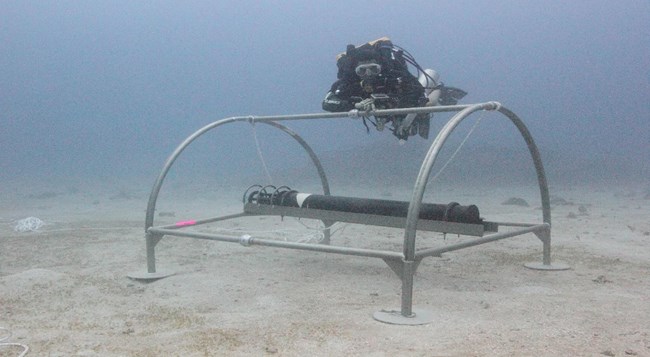
NOAA
-
Humpback Whale Calls
One minute sound clip features the calls of a humpback whale at National Park of American Samoa. Whale calls are among a variety of marine life sounds recorded at the park. Human made sounds include commercial and recreational boat motors.
- Credit / Author:
- NPS
- Date created:
- 10/05/2015

NPS
National Park of American Samoa
Housed in a titanium pressure case anchored to the ocean floor 110 ft. deep off Tutuila Island, a hydrophone logs incoming signals from humpback whales. Located in turquoise waters in the heart of the South Pacific, the park is a thoroughfare for migrating marine life such as whales. Humpbacks seek the warm, South Pacific waters in late fall and early winter to mate and give birth. They rely on sound to communicate with one another and detect vital environmental cues. Their calls are among many different recorded sounds that are sampled and analyzed by scientists each year. The recordings help scientists identify species presence and seasonal patterns of activity of both marine life and humans.

NPS
Last updated: July 17, 2018
